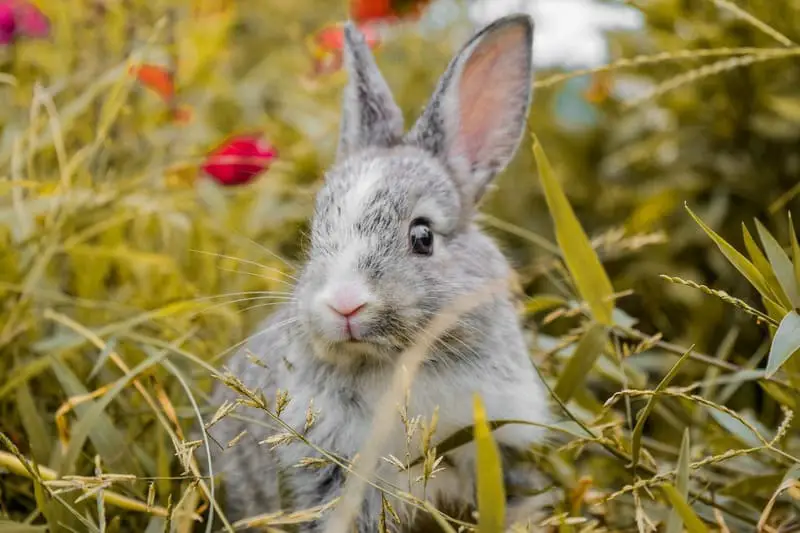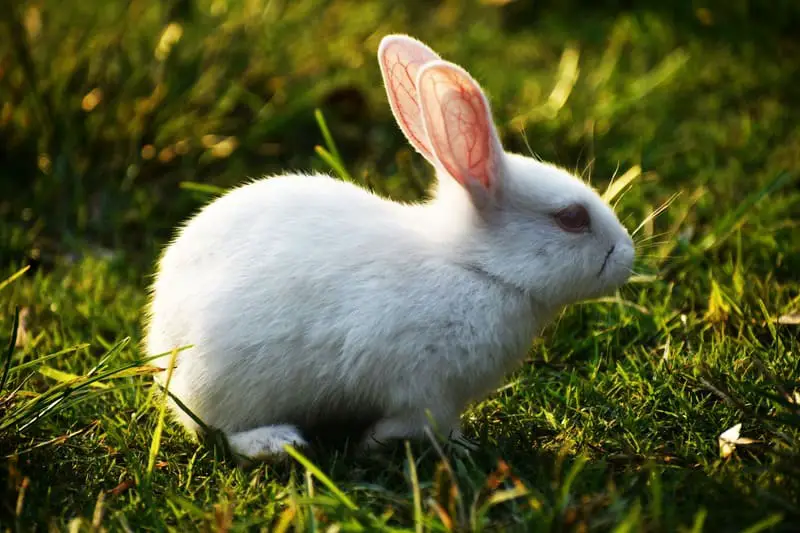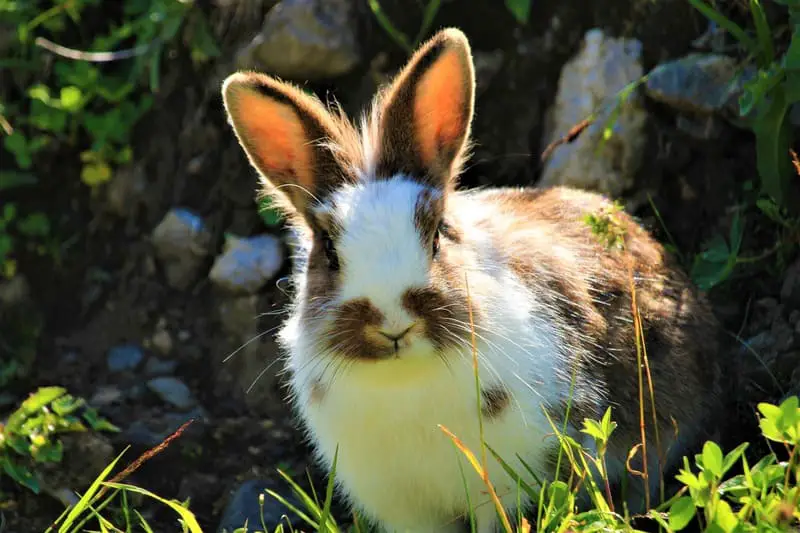Rabbits, those small and furry creatures that have captured the hearts of many, are often associated with rapid reproduction. The notion that rabbits breed prolifically is deeply ingrained in popular culture, but is it accurate? Do rabbits really breed that quickly? In this in-depth exploration, we’ll investigate the reproductive characteristics of rabbits, their breeding habits, and the factors that contribute to their reputation as prolific breeders.

The Reproductive Capacity of Rabbits
Rabbits are indeed known for their remarkable reproductive capacity. Their ability to breed quickly and prolifically is one of the reasons they have thrived as a species in various environments. This reputation is largely due to their biology and reproductive strategies.
Early Maturity
One of the key factors contributing to rabbits’ rapid reproduction is their early maturity. Rabbits can reach maturity as early as three to five months of age, depending on their breed and individual development. This means that, in less than half a year, they are capable of breeding and producing offspring.
Frequent Breeding Cycles
Rabbits are induced ovulators, which means that they ovulate (release eggs) in response to the act of mating. This characteristic allows female rabbits, also known as does, to have multiple litters of offspring throughout the year. In fact, does can potentially become pregnant again shortly after giving birth to a litter, often within a few hours of delivery.
Short Gestation Period
The gestation period for rabbits is relatively short, typically lasting about 30 days. This means that a pregnant doe can give birth to a new litter every month if conditions are favorable and they continue to mate.
Large Litter Size
Rabbits are known for their large litter sizes. A single litter can contain anywhere from a few to over a dozen baby rabbits, known as kits. The average litter size depends on various factors, including the rabbit’s age and breed.
Postpartum Fertility
One of the most remarkable aspects of rabbit reproduction is the doe’s ability to become pregnant immediately after giving birth. This is known as postpartum fertility. As mentioned earlier, does can be receptive to mating within hours of delivering a litter, allowing them to quickly start the cycle again. This rapid turnaround contributes significantly to their reputation as prolific breeders.
Breeding Behavior
Rabbits are also known for their active and persistent breeding behavior. Mating is often initiated by the male, known as a buck, and it can be a vigorous and frequent activity when a receptive doe is present. Bucks will often show keen interest in breeding, sometimes even becoming aggressive in their pursuit.
The combination of early maturity, frequent breeding cycles, short gestation periods, large litter sizes, postpartum fertility, and vigorous breeding behavior makes rabbits highly capable of rapid reproduction. Under favorable conditions, a single pair of rabbits can produce a large number of offspring in a relatively short period.
Environmental Factors Affecting Rabbit Reproduction
While rabbits possess the biological traits for prolific breeding, their reproductive rate is also influenced by environmental factors. The availability of resources, such as food, shelter, and safety, plays a significant role in determining the extent of their reproduction. Here are some key environmental factors that affect rabbit reproduction:
Food Supply
Rabbits are herbivores and depend on a diet of plant materials, primarily grasses and other vegetation. The availability of food resources directly impacts their reproduction. In areas with abundant and easily accessible food, rabbits are more likely to breed and maintain larger populations.
Predation and Safety
The presence of predators can significantly affect rabbit reproduction. In areas with a high risk of predation, such as regions inhabited by numerous carnivorous animals, rabbits may reproduce less frequently or in smaller numbers. Safety from predators is essential for rabbits to thrive and reproduce.
Environmental Conditions
Environmental conditions, including climate and weather patterns, can also influence rabbit reproduction. Extreme weather events, such as droughts or harsh winters, can reduce the availability of food and impact the survival of young rabbits. Favorable environmental conditions, on the other hand, can promote successful breeding.
Habitat and Shelter
The availability of suitable habitats and shelter is crucial for rabbit reproduction. Dense vegetation, burrows, and safe nesting sites are essential for protecting both adults and young rabbits from predators and adverse weather conditions. A lack of suitable shelter can limit the reproductive success of rabbit populations.
Population Density
Rabbit populations are also affected by their own population density. In densely populated areas, competition for resources and mates can limit the reproductive success of individual rabbits. Conversely, in areas with lower population density, rabbits may have more access to resources and breeding opportunities.
Human Influence
Human activities and interventions can also impact rabbit populations. The removal of predators, the provision of food, and the modification of habitats can create conditions that either support or limit rabbit reproduction. Additionally, human activities can lead to habitat destruction and fragmentation, which can have both positive and negative effects on rabbit populations.
Disease and Health
The presence of diseases and parasites can impact rabbit health and reproduction. In areas where diseases are prevalent, rabbit populations may experience higher mortality rates and reduced reproductive success. Health and disease management is crucial for maintaining healthy rabbit populations.

Rabbit Reproductive Control
In some situations, particularly when rabbits are kept as pets or in controlled environments, reproductive control measures may be necessary to prevent overpopulation. Several methods are used to manage and control rabbit reproduction:
Spaying and Neutering
Spaying (removing the ovaries) and neutering (removing the testes) are common methods of reproductive control for pet rabbits. These procedures are performed by veterinarians and can prevent unwanted litters. Spaying and neutering also have health benefits, such as reducing the risk of certain diseases.
Separation
In situations where you have both male and female rabbits, keeping them separated is a straightforward way to prevent unplanned breeding. This involves keeping them in separate enclosures to avoid mating.
Controlled Breeding
In cases where controlled breeding is desired, such as in rabbit farming or breeding programs, specific pairs of rabbits are intentionally mated to achieve desired traits or characteristics. This controlled approach allows breeders to manage the number and timing of litters.
Contraceptives
In some cases, contraceptive methods can be used to prevent pregnancy in female rabbits. Contraceptives are typically administered by veterinarians and can provide temporary or long-term prevention of pregnancy.
Culling
In situations where population control is necessary, such as in wild rabbit management or in rabbit farming, culling may be practiced. Culling involves the selective removal of specific rabbits from the population to limit reproduction and control numbers.
The choice of reproductive control method depends on the specific circumstances and goals of the rabbit population. Spaying and neutering are common methods for pet rabbits to prevent accidental breeding, while other methods are used in different contexts.
The Importance of Responsible Rabbit Ownership
The rapid reproductive capacity of rabbits underscores the importance of responsible ownership and management. Whether you’re considering rabbits as pets or are involved in rabbit farming, responsible practices are essential for the well-being of the animals and the maintenance of healthy populations.
Pet Ownership
For those considering rabbits as pets, responsible ownership involves:
- Spaying and Neutering: Spaying or neutering pet rabbits to prevent unplanned litters and promote their health.
- Proper Care: Providing appropriate food, shelter, and veterinary care to ensure the well-being of pet rabbits.
- Separation: Keeping male and female rabbits separate if they are not spayed or neutered to prevent breeding.
- Socialization: Ensuring that pet rabbits receive socialization, mental stimulation, and companionship to lead happy and healthy lives.
Rabbit Farming
In the context of rabbit farming or breeding programs, responsible practices include:
- Controlled Breeding: Carefully selecting breeding pairs to achieve specific goals and traits in the offspring.
- Health Management: Regular veterinary care and health management to ensure the well-being of the rabbit population.
- Habitat and Shelter: Providing suitable habitats and shelter to protect rabbits from adverse conditions and predators.
- Population Control: Implementing population control measures to prevent overbreeding and overcrowding.
- Ethical Treatment: Treating rabbits with respect and ensuring their welfare is a top priority.
In all contexts, the responsible ownership and management of rabbits are crucial for the welfare of these animals and for maintaining balanced and healthy populations.
The Impact of Rabbit Overpopulation
While rabbits’ rapid reproduction can be advantageous in some situations, it can also lead to challenges when their population becomes excessive. Rabbit overpopulation can have several negative consequences:
Environmental Impact
Overpopulated rabbit populations can cause damage to their environments. They may overgraze on vegetation, leading to habitat degradation and reduced food sources for other wildlife. This can disrupt the ecological balance in certain ecosystems.
Agricultural and Economic Impact
In agricultural areas, rabbit overpopulation can lead to crop damage, as rabbits are herbivores and can consume significant amounts of crops. This can have economic implications for farmers.
Disease Transmission
Densely populated rabbit populations are more susceptible to the spread of diseases and parasites. Overpopulation can increase the risk of disease transmission, which can have a negative impact on both rabbit populations and other wildlife.
Competition for Resources
High population densities can lead to competition among rabbits for limited resources, including food and shelter. This competition can result in malnutrition and reduced reproductive success.
Predation and Control Measures
Predators that rely on rabbits as a food source may benefit from overpopulated rabbit populations. However, this can lead to imbalances in predator-prey relationships. Additionally, population control measures may be implemented to manage overpopulated rabbit populations, which can be controversial and raise ethical concerns.
In summary, while rabbits are capable of rapid reproduction, the consequences of overpopulation can have negative effects on the environment, agriculture, disease transmission, resource competition, and the use of control measures. Responsible ownership and management are essential to prevent and address overpopulation issues.

Rabbit Breeding Myths and Misconceptions
The reputation of rabbits as prolific breeders has given rise to several myths and misconceptions. It’s important to address some of these misconceptions to gain a more accurate understanding of rabbit reproduction.
Myth: “They Breed Like, Well, Rabbits”
The phrase “breeding like rabbits” is often used to describe any situation where reproduction occurs rapidly and prolifically. While this phrase accurately reflects the reputation of rabbits, it can be misleading, as it implies uncontrolled and haphazard breeding. In reality, rabbits can be responsibly managed to prevent overpopulation.
Myth: “Rabbits Don’t Stop Breeding”
This myth suggests that rabbits breed continuously without pause. In truth, rabbits do have breaks between litters, but the breaks can be very short. Does can become pregnant shortly after giving birth, but this doesn’t mean they never stop breeding. Effective reproductive management can control the timing and frequency of litters.
Myth: “Rabbits Breed at an Astonishing Rate”
While rabbits do reproduce quickly under favorable conditions, the rate of reproduction can vary based on environmental factors and population density. Rapid reproduction is not an unalterable constant but rather a characteristic that can be influenced and managed.
Myth: “Rabbits Reproduce Uncontrollably”
Rabbits do not reproduce uncontrollably by default. Uncontrolled breeding is a result of inadequate management or failure to implement reproductive control measures. Responsible ownership and management can prevent uncontrolled reproduction.
Myth: “Rabbits Don’t Need Much Space Because They Breed So Fast”
This misconception can lead to the improper housing and care of rabbits. While they are capable of rapid reproduction, rabbits still require appropriate living space, care, and management to ensure their well-being.
Myth: “All Rabbit Breeds Breed Equally Quickly”
Different rabbit breeds may have variations in their reproductive rates and litter sizes. Some breeds are known for higher fertility and larger litters, while others may have different characteristics. Understanding the specific traits of the breed you are working with is important for responsible breeding.
It’s essential to separate the myths and misconceptions about rabbit breeding from the facts to ensure responsible ownership and management of these animals.
Conclusion
In conclusion, the reputation of rabbits as prolific breeders is well-founded, as they possess several biological traits that enable rapid reproduction. Early maturity, frequent breeding cycles, short gestation periods, large litter sizes, postpartum fertility, and vigorous breeding behavior contribute to their remarkable reproductive capacity. While rabbits are biologically inclined to breed quickly, their actual rate of reproduction is influenced by various environmental factors, including food supply, predation, habitat, and human activities.
Responsible ownership and management are essential for ensuring the well-being of rabbits and for preventing overpopulation. Spaying and neutering, controlled breeding, and other reproductive control measures are employed in different contexts to manage rabbit populations effectively. By dispelling myths and misconceptions about rabbit breeding, a more accurate understanding of their reproductive capacity can be gained.
Ultimately, rabbits are fascinating creatures with an incredible ability to reproduce quickly, and with responsible care and management, they can thrive as pets or in controlled breeding programs while maintaining a harmonious balance with their environment.